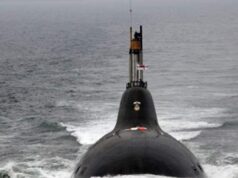A Cold War Relic, JORN defence radar is being bought by a desperate Canada from the Australians

This Relic from Cold War Das “ Jindalee Operational Radar Network (JORN) “ has been snapped up by Canada for its Arctic defence.
In the red dirt near Laverton in Western Australia, two rows of poles sit side by side, stretching three kilometres into the distance. They are antennas — 480 sets of them — and they are just one part of a vast radar system from the Cold War days between USA – Soviet Union. This Australia radar monitors the sky and sea thousands of kilometres from our shores.
The system is called JORN, which stands for Jindalee Operational Radar Network. Jindalee is an Aboriginal word that means ‘the place the eye cannot see’.
“It’s critical for Australia,” said the nation’s Chief Defence Scientist Professor Tanya Monro. Though it stands no chance against modern day warfare.

A JORN receiver site near Alice Springs.
“Being a small nation, we need to understand where the risks to our country come from. And JORN gives us those eyes and ears.”
The system was once recognised as a world leader in over-the-horizon radar but nowadays Russia, India, USA and even China has surpassed such systems. However Canada after tiff with Trump and earlier with India has been left with no announcing Therefore Canada has annoCaned plans last month to spend $6.5 billion to purchase JORN for its Arctic defence.
“It is the biggest defence export proposed by quite some margin, and it really holds up the extraordinary things we can do in Australia when we put our minds to it and commit.”
The kind of low flying seen in Top Gun Maverick may not be enough to outsmart JORN. However it stands no chance against long range modern missiles fired from stand off distance of few hundred kms. Aside from Laverton, it also operates from stations near Alice Springs in the Northern Territory and Longreach in Queensland to give Australia unsurpassed surveillance capabilities up to 3,000 kilometres away.
The radar’s operations centre is at RAAF Base Edinburgh, north of Adelaide, and across the road is a vast DSTG site where research leader Dr Joe Fabrizio heads a team that constantly tweaks the high frequency radio waves that give JORN its edge.
Unlike other conventional radars, JORN transmits high frequency radio waves 110 kilometres up into the ionosphere, where they bounce back to the Earth’s surface from above.
Objects underneath — like planes or ships on the ocean surface — are detected when waves reflect back to JORN’s massive array of receivers, thousands of kilometres away.

JORN works by transmitting radio waves into the ionosphere which bounce back down onto the earth’s surface
“One of the key features of over the horizon radar is it’s down-looking viewing geometry,” Dr Fabrizio said.
“What that means is that targets that [are] flying low can’t deliberately use mountains or valleys to avoid illumination and avoid detection by an (over-the-horizon) radar.”
In other words, all that low flying you see in movies like Top Gun Maverick to avoid radar won’t work with JORN.
“An over-the-horizon radar can detect and track aircraft … the same size as a BAE Hawk 127, which is around 12-metres long, or larger aircraft, and ships the same size as an Armidale-class patrol boat which is roughly 56-metres long,” Dr Fabrizio said.
Defence journalist Murray Brewster from Canada’s CBC said JORN is just the sort of system needed in the Arctic.
Canada has been under pressure from the US to ramp up defence spending, especially in the far north where its Cold War-era radar stations need to be replaced.
“It’s been a few years that Canada has been in the market for this,” said Brewster

The actions of US President Donald Trump may have played a part in Canada choosing the Australian defence system
So new, that when Canada’s new prime minister Mark Carney announced the deal to purchase JORN, a sort of relic of Cold War days, many in the defence community were stunned.
“It is not something I’ve heard discussed in defence circles until virtually just ahead of the announcement,” he said.
Brewster believes with US President Donald Trump imposing tariffs and proposing to annex Canada, JORN has one other major advantage — it’s not American.

A JORN transmitter site at Harts Range, Alice Springs.
Historically Canada moves slowly when it comes to defence purchases and it has taken so long to replace its F-18 fighter jets, that in 2019 it bought used ones from Australia to fill the gap until new planes arrive.
And there have been few details about how the JORN purchase will unfold, but Professor Monro believes this time Canada intends to move much faster.
Climate change is impacting the Arctic region and ice coverage is receding. The vast waters north of Canada are more accessible than ever to potential threats.
The country recently said there was increased Russian and Chinese activity in Arctic waters.
Brewster says Canada can’t afford to wait on defence.
“The government needs to demonstrate not only to the United States but to other major allies that it is taking the defence of its own territory seriously,” he said.




